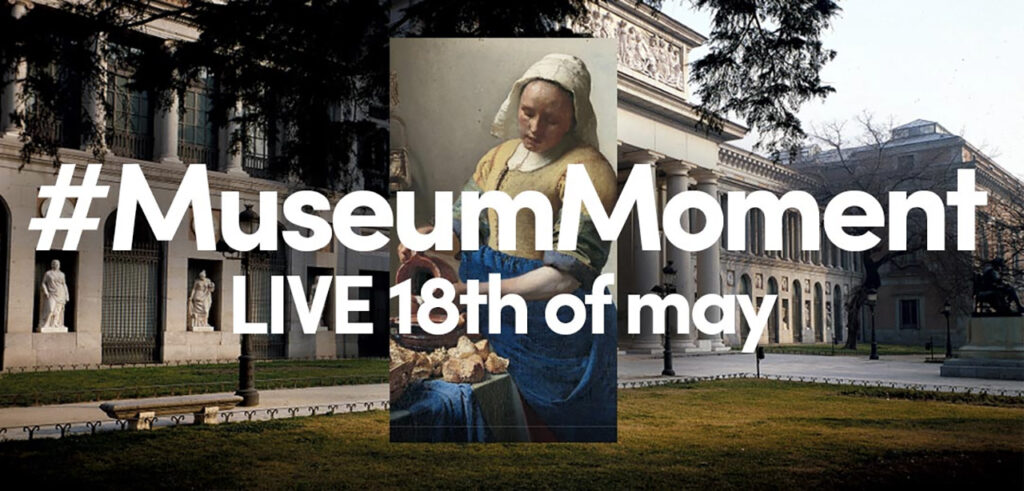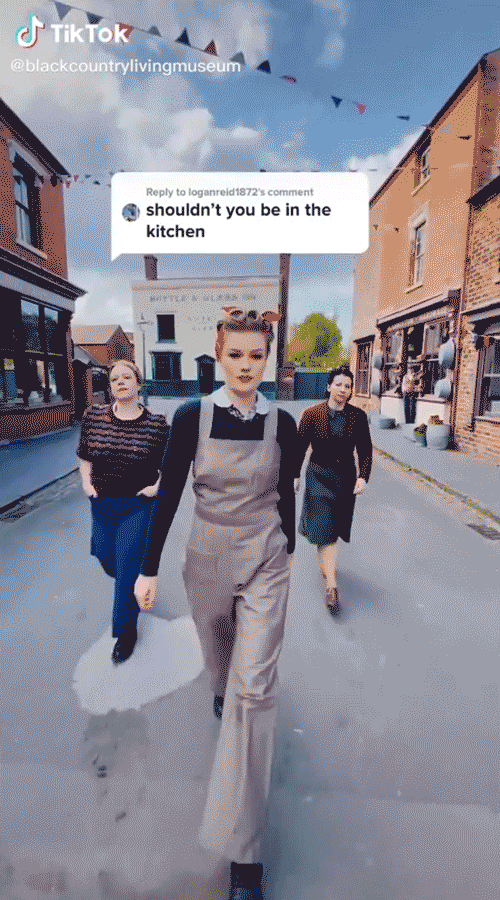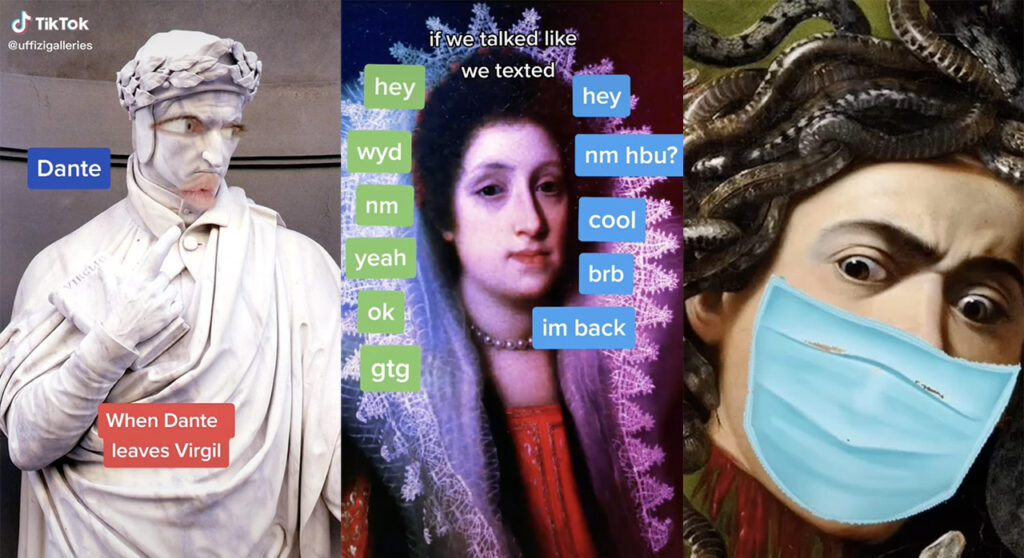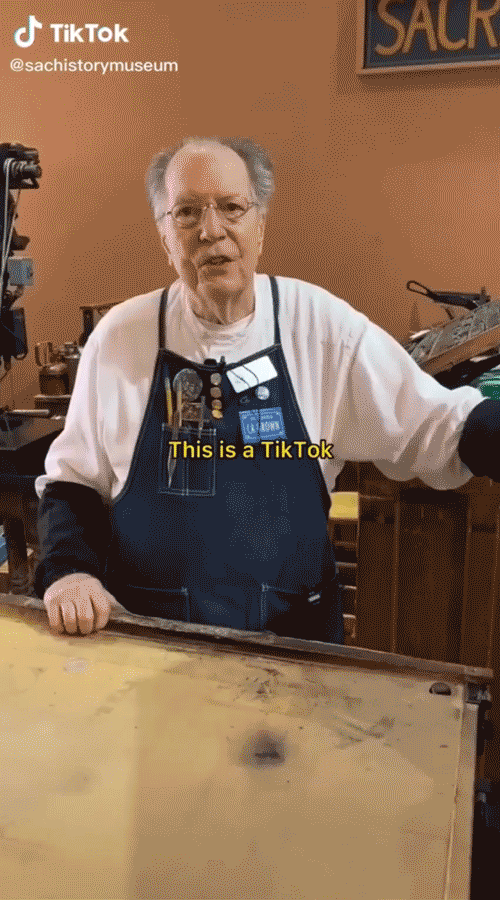Whether you’re in the yay or nay camp when it comes to TikTok, the virality-minded video sharing social network owned by Chinese company ByteDance, the app’s indomitable cultural presence is difficult to ignore. TikTok’s sophisticated AI and vast captive data pool — more than 800 million users scrolling for stimulation while trapped inside by COVID-19 — have produced a brand new wave of addictive trends, slang, and advertising models for individuals and institutions alike.
This digital outlook proved especially important over lockdown, when institutions were forced to find new ways to boost engagement from behind closed doors. Notably, content boasting hashtags like #FineArt, #ArtHistory, and #ArtonTikTik has garnered over 2 billion monthly views to date, growing over 3000 percent in the last twelve months. The #Museum hashtag alone has inspired the most video creations on earth, sporting growth by 200 percent since May 2020.

#MuseumMoment on TikTok saw 23 cultural organizations participating in a 19-hour livestream marathon to mark International Museum Day. Image: TikTok
On May 18, the app launched its first #MuseumMoment event, a livestream marathon and accompanying hashtag that explored the collections of 23 institutions across 12 countries in celebration of International Museum Day. This 19-hour event started with a tour from the National Gallery in Singapore, and moved across the world through the galleries of far- flung, iconic locales like the Tel Aviv Museum in Israel, the Rijksmuseum in The Netherlands, and the Museum fur Naturkunde in Berlin.
Programming was largely conducted in English in the form of “greatest hits” tours, allowing curators, sometimes solo, often in pairs, to nerd out about their collection’s biggest draws. This included the Palace of Versailles, which collaborated with TikTok to produce a charming AR effect that transforms viewers into Marie Antoinette as they navigate the grounds. On average, each livestream garnered about 1.5 thousand viewers from all over the world, reflecting a lively investment in the sector.
“At TikTok, we’re proud to be a place where museums and galleries can open their doors digitally and connect with audiences all over the world,” stated Normanno Pisani, Head of Media Partnerships at TikTok UK, coining the phrase “virtual tourists” to refer to this new visitor sector.
While the museums featured varied in their social media numbers and approaches, a belief in the platform’s reach remained front and center. Whether it’s Madame Tussauds Sydney creating interactive TikTok challenges, or the Aquarium of the Pacific creating a live event specifically to introduce viewers to their viral octopus, Groot, one thing is certain: TikTok is worth it for museums that want to stay relevant. The focus and import of museological TikTok campaigns have shifted to the conversion of online to in-person eyeballs, with varying results — viral fame, by nature, is tough to measure and even tougher to control.
As institutions learn more and more about TikTok’s influence over time, the real scope of museological participation on the app remains to be seen — though, already, it’s made waves. Below, Jing Culture & Commerce spotlights three heavy museum hitters who’ve effectively established a presence (read: gone viral) on TikTok and presents highlights from their #MuseumMoment sessions.
Making the past present: Black Country Living Museum

Image: Black Country Living Museum on TikTok
Cosplay represents a huge draw for TikTok’s fanbase, so it was only a matter of time until an open air museum, complete with scripting, sets, and costumes, made a digital splash. This Dudley, UK tourist attraction first garnered attention with clips featuring characters like a 1920’s “yam yam” grandfather and a World War II “wench,” transmitting Black Country’s immersive flair for British history to folks all over the globe.
Hot on the heels of their May 17th reopening date, the BCLM’s #MuseumMoment feature included a live conversation with British TikTok starlet Hannah Lowther, and pulled in nearly double the number of attendees to other members of the livestream. Notes Abby Bird, Communications Manager at the BCLM, “Since posting our first video back in August 2020, we’ve found TikTok to be the perfect avenue to fire up people’s imaginations about the past by telling the real stories of real people in new and creative ways.”
The BCLM’s success on the app has also inspired the Victoria & Albert Museum to get involved; says Annie Andoh, V&A’s Social Media Manager, “TikTok is a great platform for us and other cultural organizations to tell stories differently and dynamically in a way that can showcase the personality and joy that comes with creativity.” As of their inclusion in the #MuseumMoment event, the V&A’s account grew to nearly 2,000 followers overnight.
Leveraging the language of memes: Uffizi Galleries

Image: Uffizi Galleries on TikTok
Florence’s institutional jewel has long eschewed digital engagement in favor of tradition — the Galleries didn’t even get a website until 2015, and only set up a Facebook page when COVID-19 forced its closure in March of 2020. After the museum’s director, Eike Schmidt, found out that an administrative assistant, Ilde Forgione, liked memes, he asked her to produce material for their TikTok account.
The results were hilarious, timely, and surreal, combining trending songs with goofy reimaginations of the Galleries’ permanent collection. A particularly popular video features a cartoon coronavirus shooting through the Uffizi as a remix to rapper Cardi B’s “coronavirus” rant plays in the background. The virus is turned into a rock by Caravaggio’s painting of Medusa, who, in turn, is revealed to be wearing a face mask. “Maybe it looks a little stupid, but sometimes you have to give people a different point of view,” Forgione has said, “something that says, ‘Art is not boring… It’s something you can discover for yourself’.”
Her approach, borrowed from the Met’s Instagram account and replicated by museums like the Musée d’Orsay and Palace of Versailles, has succeeded in pulling in twice the number of young viewers than before the pandemic, according to data. The Uffizi’s participation in #MuseumMoment cemented their status as forward-thinkers in the TikTok sphere, sharing tidbits of the storied collection’s greatest curios.
Tapping staff expertise: Sacramento History Museum and Carnegie Museum of Natural History

Image: Sacramento History Museum on TikTok
This local bastion of California Gold Rush history was not necessarily poised to make waves in the digital space, given its consistent focus on old tech like linotypes and other printers of the past. This didn’t stop Howard Hatch, an octogenarian volunteer docent at the museum, from capturing thousands of hearts online through his bite-size informational TikToks —as of this writing, his biggest hit rings in at a staggering 23 million views.
This aggressively analog experience — an older gentleman demonstrating the clanking fanfare of obsolete equipment — melds ASMR with the calming, paternal immersion, giving viewers a gentle escape into a very different time. Since its reopening in March, this modest museum reported an unusually high number of visitors, most of whom say they found the place on TikTok. During its #MuseumMoment slot, viewers were taken on a tour of the print shop Howard made famous and given an exclusive peek into their new exhibit, California in Print, Howard-themed merchandise in full view.
The usage of a grandfatherly figure to boost audience morale was also championed by the Carnegie Museum of Natural History, another TikTok-famous museum with 317k followers. Back in January of 2020, the CMNH bet on an unlikely TikTok mascot: their soft-spoken, 66-year old mollusk curator, Tim Pearce, Ph.D. The conceit was simple: Pearce would tell one of his legendary snail jokes, pepper in some natural history facts, and charm the internet with what the museum’s Marketing Director, Sloan McRae, deems his “Bob Ross energy.” A runaway hit, Pearce stacked up hundreds of thousands of views overnight.
“We’ve had two missions for our campaigns, and that’s to get people in the museum, and also to spread the news and celebrate our science,” explained McRae. “TikTok seemed like a great way to do that, and also to take the intimidation factor out of scientists — if we could make scientists human, we could get people to trust them. Tim Pearce is a great avatar for that.”



